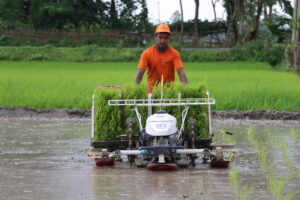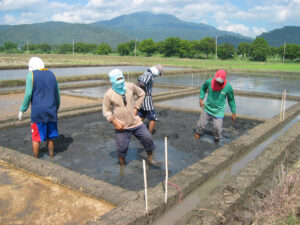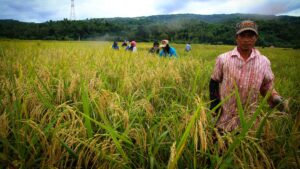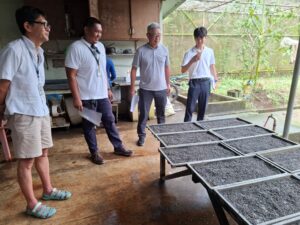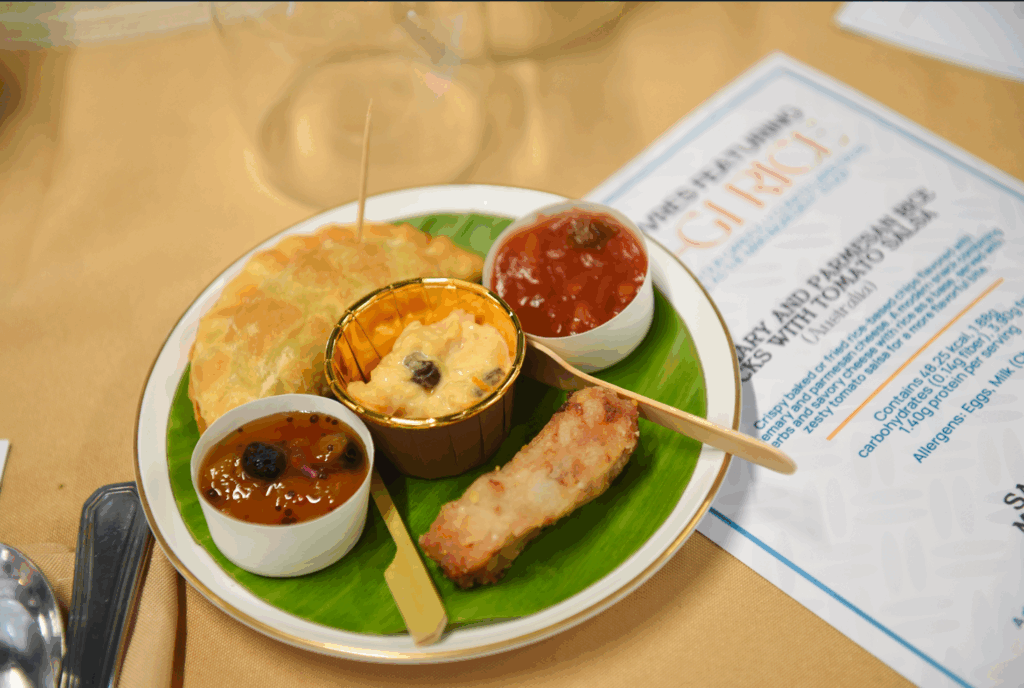
The three global rice cuisine reimagined with low-GI rice served during the launched of low-gi rice at IRRI’s 65th anniversary celebration
At the forefront of global rice science, the International Rice Research Institute (IRRI) has spent six and a half decades improving rice for both farmers and consumers, from boosting yields to enhancing nutrition. In 2025, IRRI marked its 65th anniversary with a series of events spotlighting breakthrough innovations. Among the highlights was a unique culinary showcase proving that rice can be both healthy and delicious.
During the celebration, three beloved dishes from around the world were reimagined using its innovation dubbed as low-glycemic index (low-GI) rice. Each dish proved that health and flavor don’t have to be at odds.
The tasting began with an Indian-style samosa, reimagined with a filling made not of the usual potatoes, but of low-GI rice. Lightly spiced and gently sautéed, the rice offered a texture that was unexpectedly cohesive and soft, yet structured enough to hold its shape within the crisp, golden pastry. The result was familiar, but distinctly lighter on the palate.
This was followed by Rosemary and Parmesan Rice Sticks, served with a side of tomato salsa. Baked to a delicate crunch, the sticks showcased the naturally dry texture of low-GI rice, complemented by the earthy notes of rosemary and the subtle sharpness of parmesan. The fresh tomato salsa added brightness and acidity, elevating the dish into something that felt both wholesome and refined.
To close, guests were served Milchreis with Orange and Raisins, a warm dessert inspired by a traditional German rice pudding. The rice, slowly simmered in milk and infused with orange zest, had absorbed the citrus and cream to achieve a gentle, spoonable consistency. Raisins added a soft sweetness, while the citrus notes lifted the dish with a clean, aromatic finish.
The Science Behind the Flavor: What Makes Low-GI Rice Different?
Traditionally seen as a simple side, rice has now taken center stage, not just for its taste but for its health benefits. IRRI’s low-GI rice digests more slowly than regular white rice, providing sustained energy and reducing post-meal sugar spikes. This makes it particularly significant in regions battling rising rates of type 2 diabetes.
According to a 2025 Trends in Plant Science study, widespread adoption of low-GI rice could help reduce diabetes risk by up to 20% across Asia.
What sets this rice apart is how it blends scientific innovation with traditional rice qualities. It retains the high yield, adaptability, and familiar taste of popular varieties, with the added benefit of better blood sugar control.
The Team Behind IRRI’s Kitchen
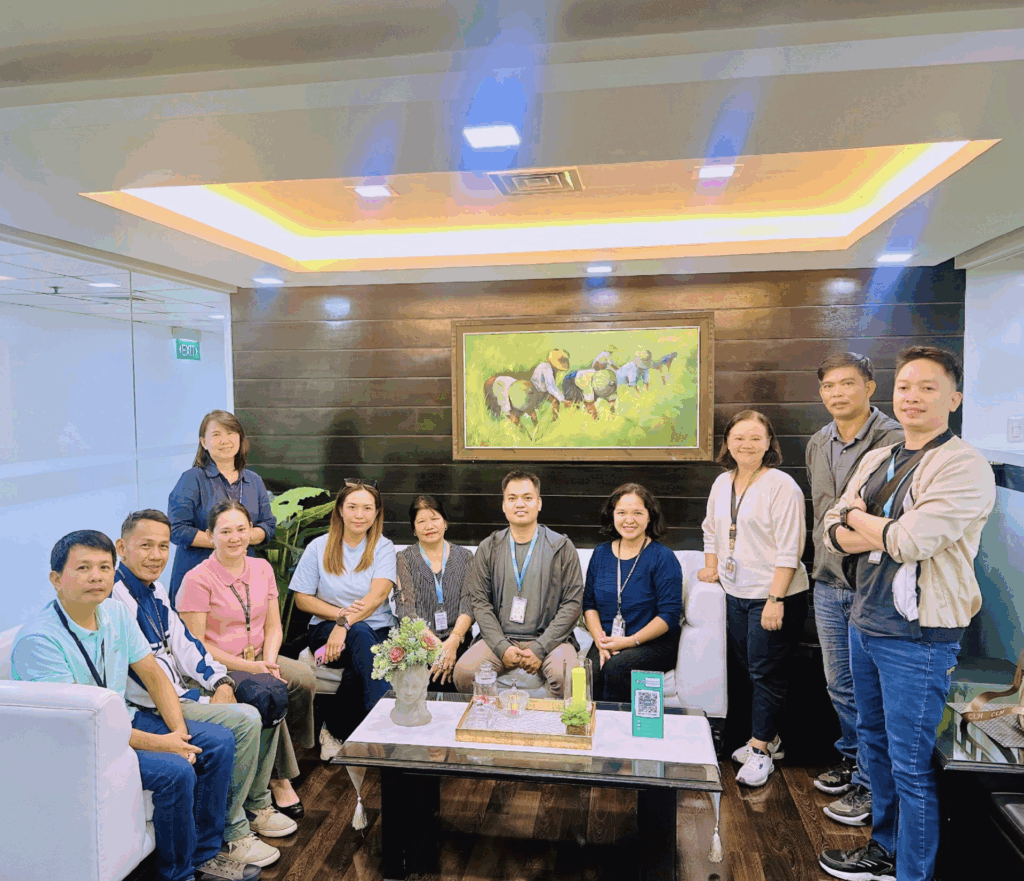
The FHS group, from left to right: Francis Sabarias, Michael Tamban, Elizabeth Panganiban, Agnes Tanzo (standing), Aprille Gonzales, Cristina Cauntay, Haris Adremesin, Mylin Monreal, Priscilla Argosino, Roman Salandanan, Arnel Cabase
The culinary showcase was a collaboration between IRRI’s Grain Quality and Nutrition Center (GQNC) and Food and Housing Services (FHS), the team behind IRRI’s Kitchen. Leading the charge were Priscilla Argosino, a veteran dietitian, and Haris Adremesin, a guesthouse chef known for his flair in Indian cuisine.
“I’ve worked in food R&D for years,” shared by Priscilla or Tita Precy, as she is dearly known on campus. “But this was the first time we reimagined entire dishes using low-GI rice. It was both a challenge and an exciting new opportunity.”
Crafting the samosa was especially tricky. Low-GI rice cooks to a dry, loose texture (locally called buhaghag), which made binding the filling a unique hurdle. After experimenting with moisture adjustments, the result was a filling that surprised even the chefs. “You wouldn’t think it’s rice,” Harris said. “It eats like a potato.”
Throughout the process, GQNC scientists advised the chefs on temperature, texture, and cooking techniques, a key partnership, given the limited supply of the rice at the time. Only two trials were possible: one for internal taste testing and another for the anniversary showcase. Yet the outcome was a hit.
Guests’ reactions reflected regional palates; South Asian visitors gravitated toward the samosa, while Southeast Asians found the Milchreis reminiscent of local rice desserts.
What’s Next for Low-GI Rice?
Encouraged by the success of the showcase, the IRRI Kitchen team is already dreaming up new recipes. “I’d love to try it in paella,” said Tita Precy. “And maybe a risotto with cheese and peas,” added Haris.
While the culinary showcase was part of IRRI’s 65th anniversary celebration, the work to scale up low-GI rice is far from over. In the Philippines, low-GI rice has received government endorsement and is currently undergoing large-scale testing on a 50-hectare field. In India, IRRI is partnering with the government of Odisha and the Department of Mission Shakti to build an end-to-end value chain for low-GI rice. This includes collaborations with the Centre of Excellence in Rice Value Addition (CERVA) to develop and scale diverse rice-based products, from flavorful rice mixes to high-protein, low-GI cookies.
References:
Tiozon, R. N., Lenaerts, B., Kor, S., Demont, M., Fernie, A. R., & Sreenivasulu, N. (2025). Low glycemic index rice: A healthier diet for countering diabetes epidemic in Asia. Trends in Plant Science, 30(6), 603–614. https://doi.org/10.1016/j.tplants.2024.11.003


